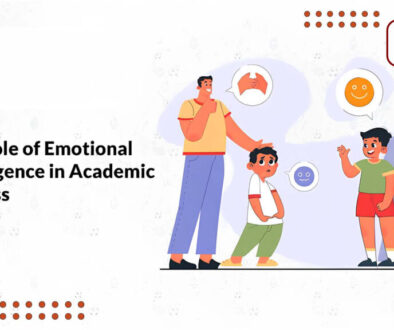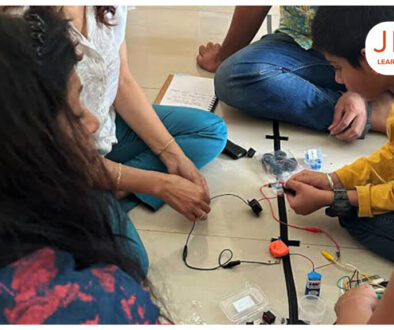Making Learning Fun and Effective: Interactive Lesson Plans
Interactive lesson plans are a unique way of studying where children are involved in the learning. These lessons allow you to be a part of the action instead of listening to the teacher and help you learn better. Children learn in an engaging and memorable way when they participate in enjoyable lessons. Kids collaborate on a project, play games, exchange ideas, and do experiments and other activities. Students find it easier to comprehend what they are learning thanks to these activities.
We will examine the methods, applications, and reasons for transforming learning in the field of interactive lesson plans.
Why Interactive Lessons Work
The assumption behind interactive curriculums is that active participation of students enhances learning. It accommodates a variety of learning preferences, including physical, auditory, and visual, to ensure that learning is accessible to all learners.
The main components of effective interactive lesson plans are as follows:
- Boosts Engagement:
Students may become disinterested in or bored with conventional teaching methods. Involve kids in interactive activities to pique their curiosity and inspire them to learn.
- Improves Retention:
Active participation in the learning process increases the likelihood that students will retain the information. Researching scientifically, for instance, brings theoretical concepts to life.
- Encourages Collaboration:
Teamwork and communication are two critical life skills that are developed through group activities. Students’ relationships are strengthened when they collaborate.
- Fosters Critical Thinking:
Students are prepared for challenges they will face in the real world through interactive lessons that encourage them to explore issues, apply their creativity, and build solutions.
- Caters to Diverse Needs:
Every child learns in a different way. A variety of exercises are incorporated into interactive lessons to ensure that each student understands the material in a way that works for them.
Examples of Interactive Activities
The following suggestions will help to make lessons more dynamic and interesting:
- Think-Pair-Share
How it Works: After the teacher poses a question, each student considers their response on their own talks about it with a partner, and then presents it to the class.
– Benefits: Promotes peer learning and student involvement even from more quiet ones.
- Educational Games
How it Works: It operates by transforming lessons into games. For instance: Use math games to practice problem-solving skills or trivia to teach history.
Benefits: Provides engaging concept reinforcement and makes learning fun.
- Hands-On Experiments
How it Works: The way it works is by letting students build models or conduct experiments in science and geography classes.
Benefits: Provides abstract ideas with a clear form.
- Role-Playing
How it Works: Assign students roles to enact historical events or contemporary situations. An example would be a fictitious discussion on environmental matters.
Benefits: Increases comprehension of difficult subjects and boosts public speaking confidence.
How to Create Interactive Lesson Plans
Although creating interactive lessons takes some preparation and imagination, the rewards are well worth the work:
- Set Clear Objectives
Decide what you want the students to understand by the end of the class. Setting clear objectives is essential whether you’re trying to understand a historical event or solve a math problem.
- Break Down Content
Include interactive exercises in each section of the lesson and break it up into manageable units. For instance, begin with a brief explanation, then move on to a group exercise and conclude with a discussion.
- Include a Variety of Activities
Mix things up because different students have different learning styles. All learning styles can be accommodated by using visual aids, group discussions, and practical exercises.
- Encourage Participation
Establish a space where students can freely express their thoughts and ask questions. For this think pair-share exercises, and group projects are excellent.
- Use Real-Life Examples
Connect lessons to real-world situations. For example, organise a class activity to teach math budgeting or use a school garden project to investigate environmental science.
Overcoming Challenges
While interactive lessons are highly effective, they can also be challenging to implement. Here’s how to overcome common hurdles:
- Time Constraints:
Teachers frequently experience time pressure. Increase the number of interactive elements gradually after starting with smaller ones.
- Classroom Management:
On occasion, interactive activities may turn noisy or chaotic. Give students tasks to complete and set clear expectations to keep them on track.
- Limited Resources:
Modern technology and resources are not available in every school. Utilize what you have; simple props or printed handouts for storytelling can be equally effective.
- Reluctant Students:
It’s possible that shy students will be unwilling to participate. Offer them gentle encouragement and pair them with supportive classmates.
Real-Life Success Stories
Interactive lessons have transformed classrooms around the world. Here are a few inspiring examples:
Case 1: A Science Class
Ecosystems were introduced by a teacher through a hands-on project. In order to document their observations, students constructed tiny plant containers and observed how plants and insects interacted.
Case 2: A History Class
An instructor set up a role-playing game about the French Revolution instead of delivering a conventional lecture. Students played the parts of peasants, nobles, and revolutionaries, debating and negotiating like historical figures. This made the lesson memorable and gave it life.
The Impact of Interactive Teaching
Interactive lessons help students get ready for life beyond the classroom. They teach academic concepts as well as problem-solving, teamwork, and critical thinking skills. By actively involving students, these lessons foster a love of learning and increase their self-confidence.
Conclusion
Interactive lesson plans are a means of turning learning into an adventure rather than merely a teaching tool. They keep students engaged, aid in their comprehension of difficult concepts, and assist them in acquiring critical life skills. Through the use of games, experiments, and discussions. Teachers can create a classroom environment that inspires students to learn something new every day. Through interactive teaching, a teacher or mentor can impact children’s learning and development. Together we can make education an inspiring and successful endeavor.




